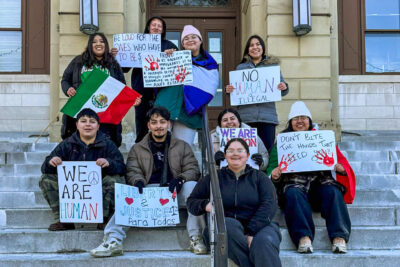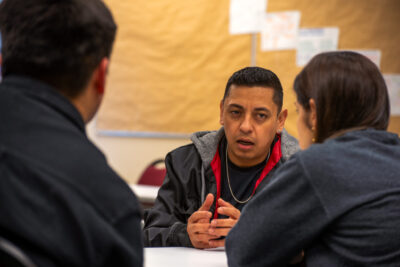“Warriors for the Human Spirit are awake human beings who have chosen not to flee. They abide. They serve as beacons of an ancient story that tells of the goodness and generosity and creativity of humanity. You can identify them by their cheerfulness. You will know them by their compassion. When asked how they do it they will tell you about discipline, dedication and the necessity of community.”
—Margaret J. WheatleyI heard stories from warriors for the human spirit at the Intercollegiate Peace Conference. Warriors for the spirit of the Indigenous, the incarcerated, the professor and the student, social worker and the police officer. These warriors reminded me that while there is so much good in the world as a result of restorative justice, there is much to be done.
Before attending the conference, my idea of restorative justice was limited. I saw it as this some are trying to implement in the criminal justice system. This thing that should help those inside the system be better equipped once leaving the system by giving them tools.
During this conference, I learned that restorative justice is so much more than that. Restorative justice at its core, is the art of building relationships with one another. That should be easy, right? It’s not. It’s one of the hardest things we will ever do.
Building relationships takes time. It takes patience, vulnerability and trust—things that are difficult when our society teaches us that it’s all about us. It goes all the way back to our forefathers who had that mentality when they stripped the land now named the United States of America from the Indigenous People. When they not only claimed the land as their own, but had not even thought of building relationships with the Indigenous community. Instead they enslaved them, forced religion down their throats and killed them.
This conference began with a land acknowledgement. For those who are unaware of what a land acknowledgment is, it is a formal statement that recognizes the unique and enduring relationship that exists between Indigenous Peoples and their traditional territories.
Following this statement, we were fortunate enough to hear from the two representing Indigenous community, Amy and Christine. The two showed up to a group of mainly white people to share their stories, their music and the ways they are working at restorative justice in their communities. They showed us goodness and generosity as they shared smudging, a ceremony for spiritual cleansing and blessing that involved the burning of sage. They were identified by their cheerfulness as they pounded their drums and their voices rang out in song. True warriors for the human spirit.
If you’re like me, you’re wondering how restorative justice can look in your life. Hearing Amy and Christine’s stories challenged me to take steps towards acknowledging the land I live on and the pain that has been caused because of it. The first step is simply asking questions about the land.
Whose land did it belong to before colonization? Who are the Indigenous People that maintained harmony and balance in the life of their communities and the earth? What are their stories? What are their traditions and rituals? What are the ways the pervasive and ongoing colonialism is causing pain?
Potawatomi Christian Kaitlin Curtice writes, “When we begin rebuilding what has been broken for so long, I believe the healing will shift the foundations of this benevolently created world, every culture and created thing included in a slow and steady bloom.”
This is indeed the work of restorative justice. This is the work of warriors for the human spirit. I invite you to join me.


